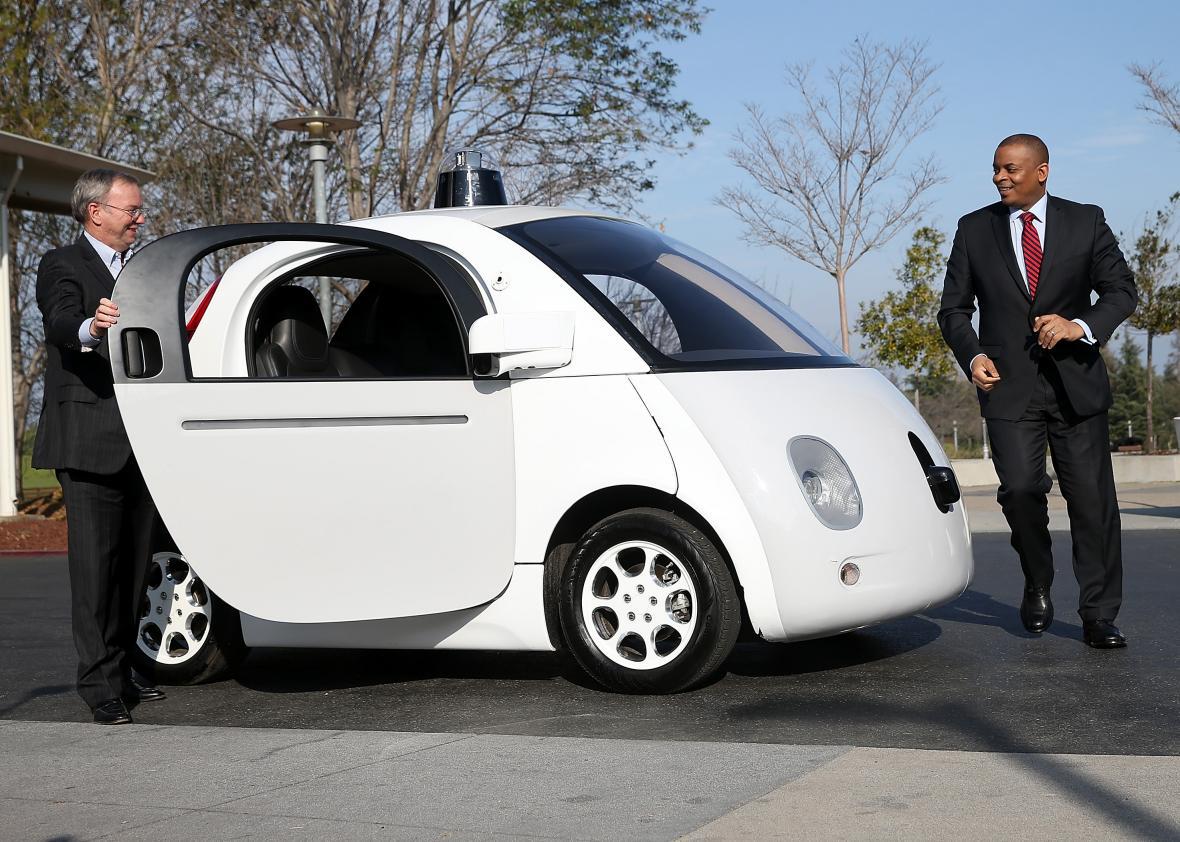In his final State of the Union address on Tuesday, President Obama said he wanted to “put tens of thousands of Americans to work building a 21st-century transportation system.” He didn’t say what he meant by that, however, leaving pundits and jokesters to speculate on what that transportation system might look like.
Now we know what at least one component of that system will be: self-driving cars.
In Detroit on Thursday, Obama’s transportation secretary will announce a proposal to spend $4 billion over the next 10 years to help machines take the wheel. Specifically, the earmark is intended to “accelerate the development and adoption of safe vehicle automation through real-world pilot projects,” the Department of Transportation said in a statement. The proposal will be part of the president’s 2017 budget.
The money will go toward pilot programs that set up designated corridors around the country for self-driving car testing. The DOT will also work to remove regulatory obstacles that could hold back the technology. Until now, a patchwork of state laws has made some states hotbeds for self-driving car testing while others are behind the cuve. Anthony Foxx, the transportation secretary, said in a statement:
We are on the cusp of a new era in automotive technology with enormous potential to save lives, reduce greenhouse gas emissions, and transform mobility for the American people. Today’s actions and those we will pursue in the coming months will provide the foundation and the path forward for manufacturers, state officials, and consumers to use new technologies and achieve their full safety potential.
The government is prioritizing self-driving car technology because of its potential to save lives, said Mark Rosekind, head of the National Highway Transportation Safety Administration:
NHTSA is using all of its available tools to accelerate the deployment of technologies that can eliminate 94 percent of fatal crashes involving human error. We will work with state partners toward creating a consistent national policy on these innovations, provide options now and into the future for manufacturers seeking to deploy autonomous vehicles, and keep our safety mission paramount at every stage.
The agency also updated its official policy guidance on autonomous vehicles, which it first published in 2013. And it announced a number of “milestones” that it plans to reach by the end of 2016, including creating a model state policy on autonomous vehicles that offers “a path to consistent national policy. One other milestone of interest (emphasis mine):
DOT and NHTSA will develop the new tools necessary for this new era of vehicle safety and mobility, and will consider seeking new authorities when they are necessary to ensure that fully autonomous vehicles, including those designed without a human driver in mind, are deployable in large numbers when they are demonstrated to provide an equivalent or higher level of safety than is now available.
Industry experts agree fully autonomous vehicles are still years away from commercial viability. But a consistent national regulatory framework could help to speed the timeline, provided the vehicles live up to their promise of reducing accidents. Meanwhile, numerous car companies, including Tesla, are selling or are close to selling vehicles with “semi-autonomous” systems that can take the wheel under certain circumstances, such as highway driving in clear conditions, provided an attentive human remains behind the wheel.
Foxx is expected to offer further details in an appearance at the Detroit auto show Thursday afternoon. Meanwhile, you can read the full announcement here.
